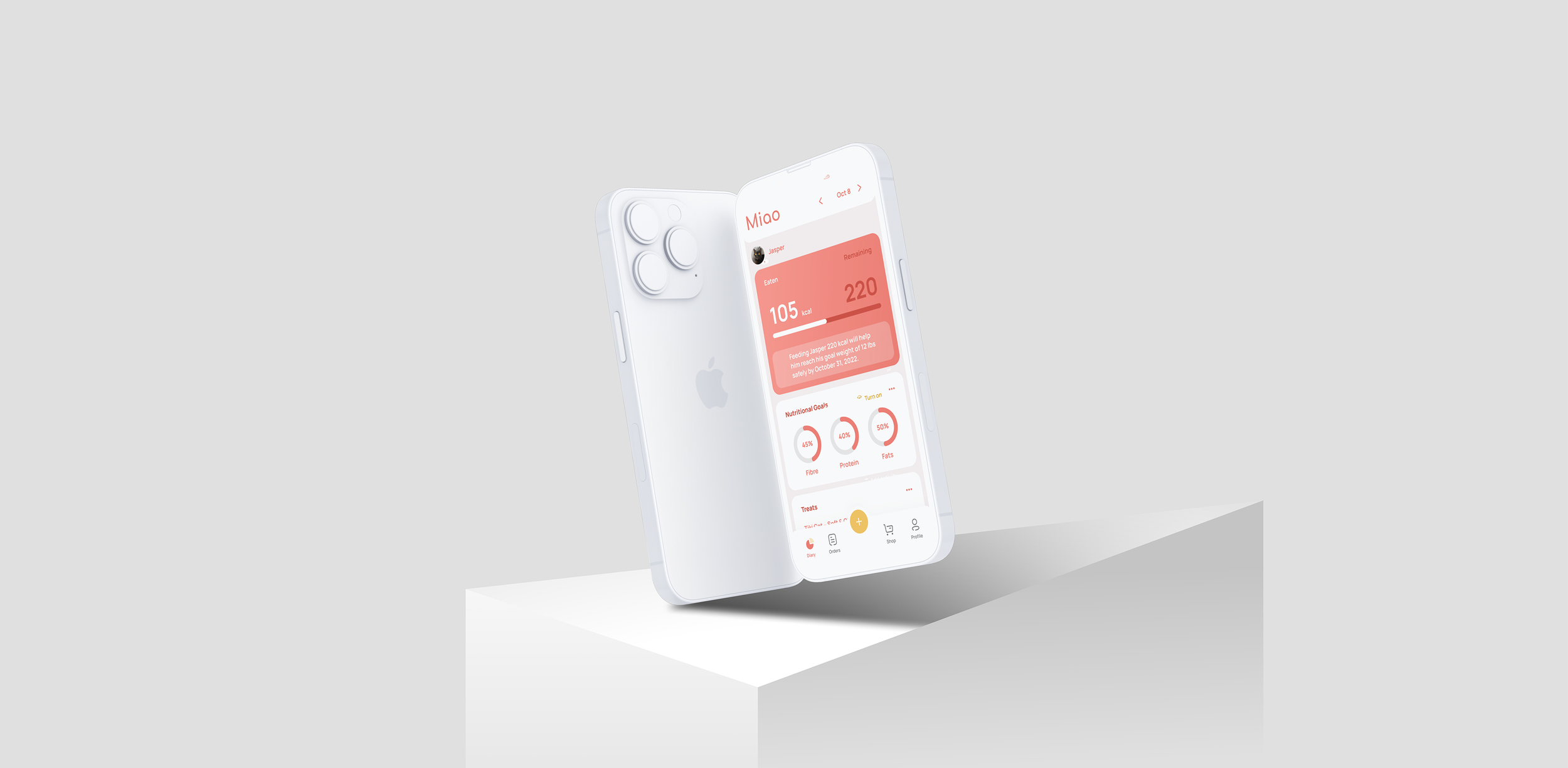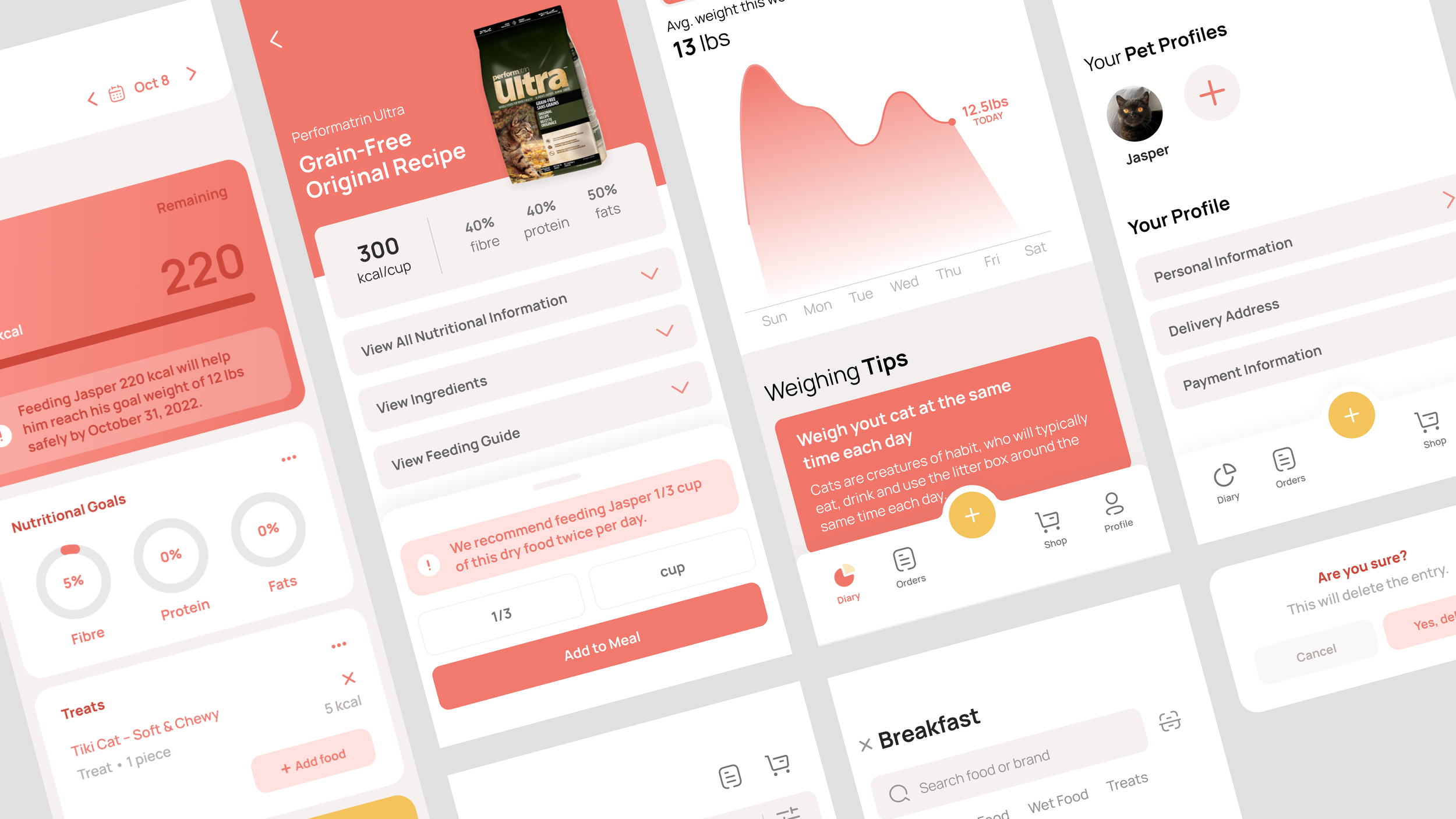
Miao
June-October 2022
Designing a mobile application for pet owners who struggle with tracking their cat’s health
Miao is a cat nutritional health tracking app. It was designed primarily to help cat owners track their cat’s food intake and suggest healthier food options and amounts to reach their cat’s weight goals.

Project summary
Context
This was a project for my Google User Experience Design course. My prompt for this project was to design a health-tracking app for a cat food delivery service.
Challenges
Very rarely do cat food labels make it easy to determine how much you should feed your cats and as a result, many cats are overfed. This makes it difficult to properly track your cat’s health.
Goals
Create an app that demystifies cat health, especially in relation to their food intake. Since this is also technically an app for a cat food delivery service, we want to push better products to customers that they can order directly through the app for their cats.
Research
Interviews with cat owners
I conducted interviews and created empathy maps to understand the users I’m designing for and their needs. The group of cat owners that were interviewed confirmed that most are unable to properly read nutritional labels and fall victim to overfeeding their cats.
The user group confirmed these initial thoughts about the user base but also highlighted that many people buy their cat food based on brand recognition and are susceptible to purchasing food packed full of fillers like grain, which is not part of a healthy diet for cats.
“Honestly, I just buy IAMS cat food because I’ve seen a lot of advertisements for them…I’ve never really looked at the ingredients.”
Pain points
INACTIVITY
Cats are often overfed and because it is difficult to keep cats active, many become overweight.
LANGUAGE
Understanding nutritional labels are more difficult to understand than human nutritional labels.
FILLER INGREDIENTS
It’s difficult to know which ingredients to look out for as many big-name brands use fillers like grain.
FOOD AMOUNT
The amount of food that is meant to be given to a cat is often unclear as labels only use weight ranges.
Low-fidelity
Paper wireframes
I began with initial design concepts specifically for the home screen. I felt that it was important to find a way to view pet profiles and all of the cat’s data at a glance.
Users having to dig deeper for the guidance they’re looking for would be the concept behind this app being a failure.
Digital wireframes and prototype
I used the best elements from my crude paper wireframes as a base for designing my digital wireframes. I tried to make sure the pages were as simple and clear for users as possible.
I used these digital wireframes to create a low-fidelity prototype in order to test how my app was working for users.
High-fidelity
Prototype
Early design testing showed that many users were confused about how to add a previous meal. This was a major problem since most cats eat the same thing every day. I simplified the process by creating tabs and a search bar.
The second usability study revealed a desire for more emphasis on caloric intake. I simplified the homepage to create much more emphasis on what is eaten in a day, rather than on tracking over time. Tips were also implemented more throughout.
Test my high-fidelity prototype!
Conclusion
Results
Overall, I think that this project was a success in achieving its goal of demystifying cats’ nutrition. I would love to further develop the app by creating a data base of information for app pets since I think that would open up the target market just a little bit.
Reflection
While designing the Miao app, I learned that it is okay to make changes and realize through further user testing that sometimes you had it right the first time. There’s no shame in going backward if it creates a better experience for the users.


